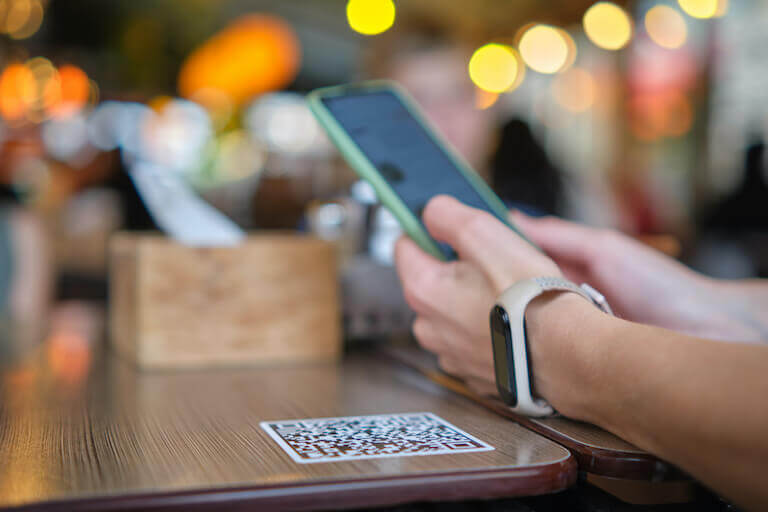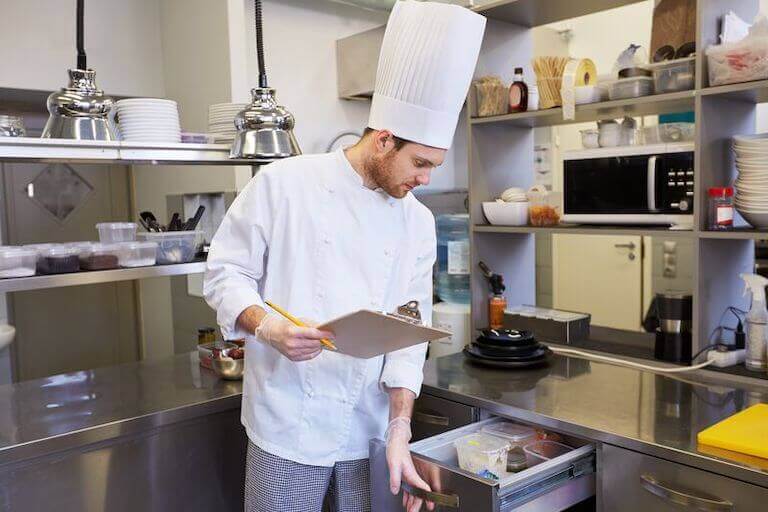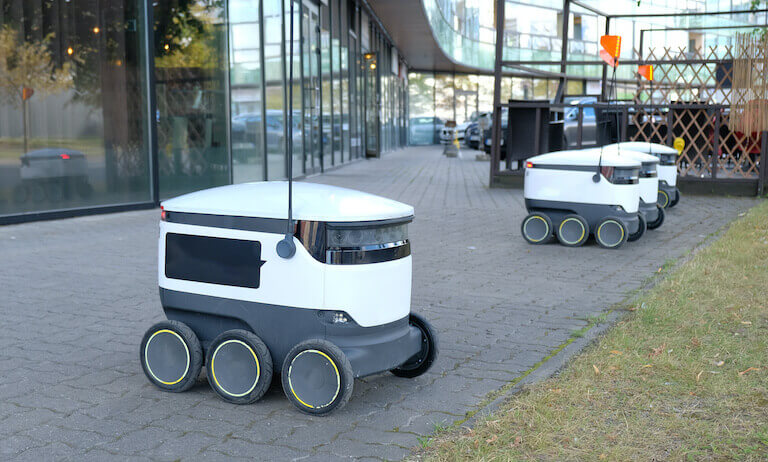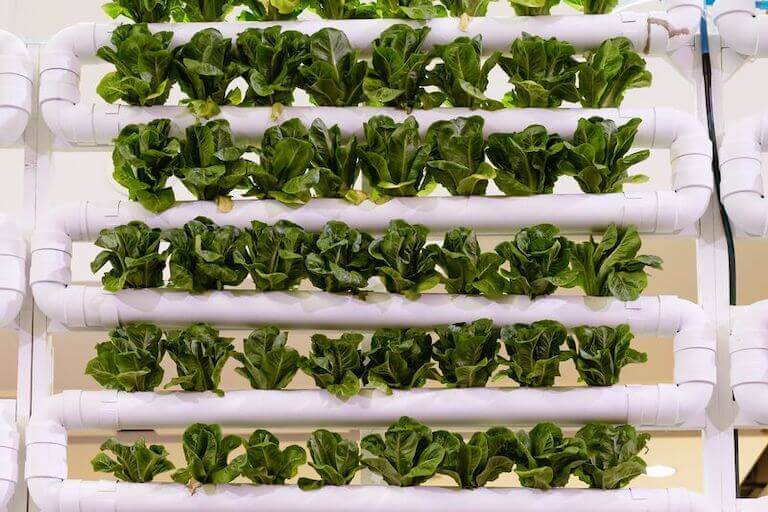Artificial intelligence (AI) has been all over the news recently. The recent rollout of the newest version of ChatGPT, the AI-powered chatbot, has been making waves and sparking think pieces about the future of work in industries from coding to marketing.
What do AI tools mean for the restaurant and food industries? After all, a chatbot can’t get into the kitchen and whip up a souffle. But the growing functionality of these tools may make life easier for chefs and other industry employees today and in the near future!
How AI Is Changing Restaurants
When we talk about AI in restaurants, we’re usually not talking about AI-powered robots or large-scale automations. Most restaurants don’t have the kind of large manufacturing needs that would require mechanized interventions. It’s much more likely that AI will be used to streamline some of the day-to-day tasks of the restaurant, both in the front of house and back of house, as well as improve restaurant marketing. Here are some of the improvements we’re seeing due to this new technology.
1. Personalized Menu Recommendations for Guests
AI can power analytic tools that make personalized recommendations to customers based on past behavior. For example, AI-powered engines can assess a customer’s past orders and reviews, determine days they may be more likely to place an order, and choose events that they may be interested in. This kind of personalized analysis will let AI make custom suggestions to the customer. For example, if a customer has only ordered vegetarian items, the AI could infer that the customer eats a plant-based diet, and can make recommendations that are relevant to that guest.
The company Dynamic Yield (previously owned by McDonald’s) offers these services, with a self-training model that can analyze data and predict future possible sales.

AI-powered ordering platforms both onsite and for takeout/delivery may be able to make personalized recommendations to increase check averages and suit customer’s preferences.
2. Predictive Analytics for Smarter Forecasting
Using predictive analytics, artificial intelligence can analyze sales data, weather patterns, and local events to estimate future sales. This may help to take the guesswork out of forecasting, so chefs can make more accurate employee schedules, estimate their inventory needs, and improve their long-term financial outlook.
3. Chatbots to Answer Questions, Take Orders, and Set Reservations
Today, most reservations are taken on sites like OpenTable or Resy. And online orders often go through platforms like Toast or ChowNow.
AI-powered chatbots can streamline these processes into a single platform. How about instead of navigating a complicated interface of checkboxes and customizations in an online ordering platform, the customer could have an easy “conversation” with an AI chatbot? The bot could ask all the questions a server would, like “Would you like fries with that?” for easy upsells. Domino’s Pizza, for example, uses a chatbot on Facebook Messenger to take orders and provide order updates.
Chatbots may also help guests find the right reservation time for their party and answer questions, like “Is there anywhere to park nearby?” or “Do you have a dress code?”
Up to now, chatbots have been relatively limited, responding with pre-set answers that are provided by the restaurant. With the recent release of ChatGPT, expect the functionality of chatbots to improve a great deal in the near future!
AI By the Numbers
- Don’t panic: AI is expected to create 12 million more jobs than it eliminates over the next few years.
- You’re probably already using AI: 97% of mobile phone users use voice assistants like Siri and OK Google.
- ChatGPT is breaking records: The AI-powered chatbot had over 100 million users in February 2023, just three months after its most recent release.
- Don’t disconnect that phone just yet: 60% of customers would still rather wait to speak to a live agent than get chatbot help immediately.
4. Improved Cost Tracking and Menu Pricing
Historically, calculating the cost of each plate has been a painstaking process that requires spreadsheets and formulas. And since the cost of ingredients can fluctuate, those spreadsheets have to be updated often with up-to-date costs.
AI programs can make the process faster and easier. xtraCHEF, for example, can easily calculate the cost of each plate and update those costs automatically based on scanned invoices from suppliers. It can also factor in unique labor costs for more time-consuming items, instead of applying the same labor percentage across the entire menu.
This can give chefs a real-time understanding of the cost of each menu item, so they can see at a glance if their margins are shrinking.

The time-consuming inventory process can be sped up with AI tools.
5. AI-Integrated Inventory & Purchasing To Save Time
Inventory and purchasing are two chores that can take up a lot of time in the kitchen. What could a cook or chef accomplish if they got some of that time back?
AI-integrated inventory tools can track stock levels in real time and automatically create purchase orders when quantities run low. They may also be able to analyze vendor performance and pricing so chefs can decide whether to keep a supplier or try a new one. With these tools, restaurants may be able to cut costs and streamline their inventory management process.
SynergySuite, for example, uses AI-powered forecasting to predict demand and optimize inventory levels around that demand.
6. Robotic Food Delivery
If you live in a major city, you may have seen a small unmanned cart zipping around the sidewalk. These autonomous vehicles have been used to deliver food from restaurants and supermarkets right to consumers. They are run by AI that can learn routes and assess obstacles in their way. While this hasn’t caught on at a large scale yet, we don’t know what the future holds. These autonomous vehicles could help to reduce the cost of third-party delivery services, since there would no longer be a need to pay a human driver.
And beyond the restaurant industry, this could have major implications for seniors or those with disabilities that make it hard to run errands. A service that could deliver groceries or medicines at a low cost could make life much easier for those who have difficulty leaving their homes.

AI-powered delivery vehicles can bring food and groceries to people at their homes with no driver or delivery person.
How AI Can Improve the Food Supply Chain & Food Manufacturing
AI in the food industry isn’t limited to restaurants. The entire supply chain, from agriculture to distribution, could see substantial improvements with AI tools!
7. More Efficient Food Production
Much of the food chain is already automated, with robotic components completing repetitive tasks like food sorting and packaging. These machines can be sterilized for cleanliness and can run 24/7 (minus some maintenance time).
While they’re already efficient, the addition of AI can help them to do even more, like making value judgments about the quality of produce.
The addition of AI can make these processes both faster and safer. AI can guide the robotic components to react to changes or troubleshoot problems before they take the entire manufacturing process down.
8. Developing a Stronger and Safer Supply Chain
Feeding a growing population has been a focus of scientific research for centuries. At the recently-formed AI Institute for Next Generation Food Systems, scientists and researchers from five top American universities are getting help from AI. The institute uses AI learning to develop better food production, from breeding plants for higher yield to better agricultural methods to more efficient processing and distribution.
One of their current projects aims to use AI to predict food safety risks at the consumption end of the supply chain. A project like this could raise red flags about possible contaminations before consumers get ill.

AI tools may be able to produce more food more safely.
9. Predicting Consumer Response To New Products
Food manufacturers considering a new product or new version of an existing product often have to do extensive market research and consumer surveys to identify trends and assess tastes. What if that process could be automated with AI?
The AI at Gastrograph gathers data on products and consumer preferences in specific markets. It then recommends product changes and predicts how the target consumer will respond to them. With a tool like this, manufacturers may be able to reduce the lead time on getting their products to market and create more successful products for specific demographics.
AI: A Useful Tool For the Food Industry
AI is still in its infancy. We’re a long way from robots and AI that can think or behave just like a human. In fact, that breakthrough may never happen.
But smart AI tools are here, and they may take a lot of the guesswork out of the restaurant and food industries. If AI in the food industry can help chefs to spend less of their time on inventory, ordering, and menu pricing, they may be able to spend more time on recipe development and cooking—the things they truly love to do!
And those are some of the topics students may explore at Auguste Escoffier School of Culinary Arts. With programs in culinary arts, baking and pastry arts, and plant-based culinary arts, aspiring cooks and chefs can start building their skills and working towards their futures in food! Contact us to learn more about our programs and get answers to all of your questions.
To learn more about the changing world of food, try these articles next:



